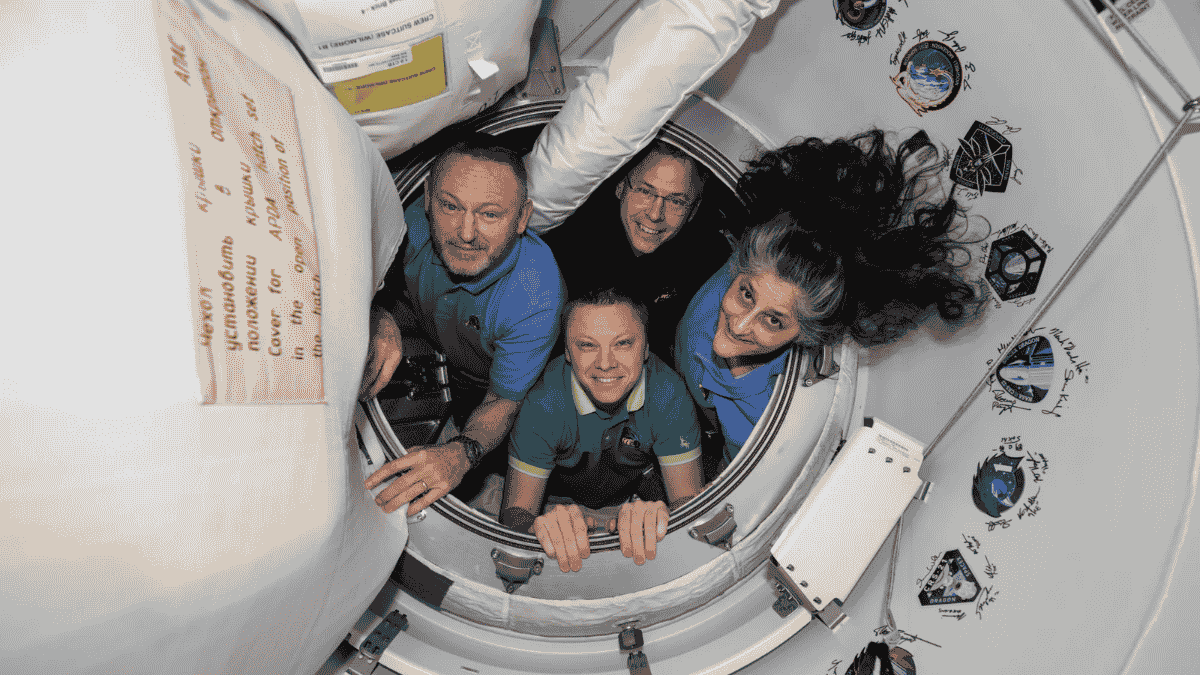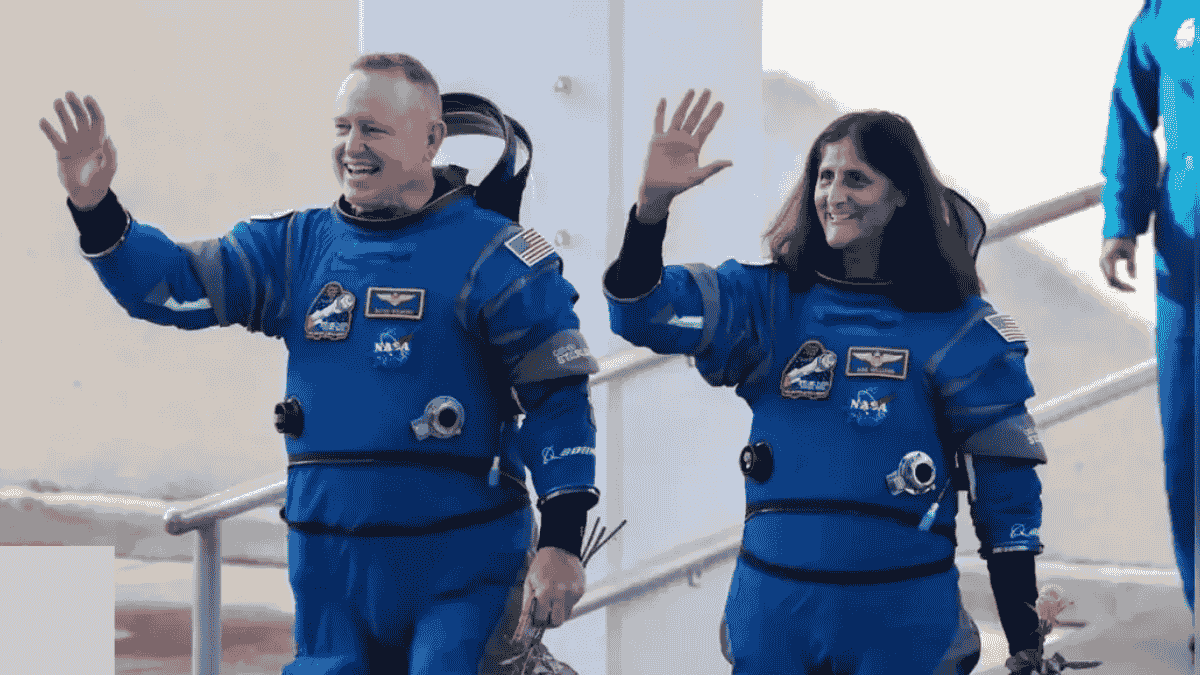Sunita Williams Returns to Earth- NASA astronauts Sunita Williams, Butch Wilmore, and Nick Hague along with Roscosmos cosmonaut Aleksandr Gorbunov are returning to Earth after nearly nine months aboard the International Space Station (ISS). They are traveling on SpaceX Crew Dragon as part of the Crew-9 mission.
According to NASA, the Crew Dragon spacecraft undocked from the ISS at 10:35 IST on 18th March and Sunita Williams returns to Earth with a splashdown off the coast of Florida at 4:27 AM IST on March 19. The return, originally scheduled for June 24, was postponed due to a technical glitch in Boeing’s Starliner spacecraft.
SpaceX Crew Dragon’s Return Journey to Earth Estimated at 17 Hours
The SpaceX Dragon capsule requires approximately 17 hours for its return journey to Earth. Unlike Russia’s Soyuz spacecraft, which can return astronauts to Earth in just 3.5 hours. This extended duration is carefully planned to ensure crew safety and landing accuracy. The reentry process necessitates precise alignment with designated landing zones, preventing Crew Dragon from initiating descent immediately after undocking from the International Space Station (ISS).
Why Some Spacecraft Take Longer to Return to Earth
(1) The International Space Station (ISS) orbits Earth at approximately 28,000 km/h (17,500 mph) at an altitude of around 420 km. The reentry process requires precise alignment with designated landing zones, preventing Crew Dragon from initiating descent immediately after undocking.
(2) To ensure a safe return, the spacecraft must execute a controlled deorbit burn, precisely adjusting its trajectory toward the designated splashdown site. In contrast, the Soyuz follows a more direct ballistic descent, resulting in a faster but more intense reentry.
(3) SpaceX selects landing sites based on optimal weather conditions, including ocean currents, cloud cover & visibility, lightning & storm activity, and the positioning of recovery vessels. If conditions at the primary landing site are unfavorable, the capsule may remain in orbit longer before initiating reentry to ensure a safe splashdown.

Effects of space travel on astronauts
After Sunita Williams returns to Earth, her capsule splashed down off the coast of Tallahassee. The crew, including Butch Wilmore and Nick Hague, along with Roscosmos cosmonaut Aleksandr Gorbunov, was immediately transported for medical evaluations.
Returning to Earth after an extended stay in space can pose several physiological challenges due to prolonged exposure to microgravity. Some of the key health issues astronauts may experience after splashdown include:
1. Balance and Vestibular Issues (Space Motion Sickness)
- The inner ear, which controls balance, adapts to microgravity, leading to dizziness, disorientation, and nausea upon return.
- Astronauts may have difficulty standing or walking immediately after landing.
2. Orthostatic Hypotension (Blood Pressure Drop)
- In microgravity, fluids shift toward the upper body; after landing, gravity pulls them back down, leading to low blood pressure and fainting when standing.
3. Muscle Weakness and Fatigue
- Without regular resistance exercise in space, astronauts experience muscle atrophy, particularly in the legs.
- Recovery requires physical therapy and strength training.
4. Bone Density Loss (Osteopenia)
- Astronauts lose 1-2% of bone mass per month in space due to reduced mechanical loading.
- This increases the risk of fractures and requires calcium intake, resistance training, and rehabilitation post-mission.
5. Cardiovascular Changes
- The heart may shrink slightly and become less efficient at pumping blood, leading to temporary reduced stamina and endurance.
6. Immune System Alterations
- The immune system can be weakened after prolonged spaceflight, making astronauts more susceptible to infections.
7. Visual Impairments (Spaceflight-Associated Neuro-Ocular Syndrome – SANS)
- Microgravity-induced fluid shifts can cause swelling in the optic nerve, leading to temporary vision changes.
8. Radiation Exposure Risks
- Astronauts are exposed to higher levels of cosmic radiation in space, which may slightly increase the risk of long-term health issues like cancer.
After Sunita Williams Returns to Earth with other astronauts Immediate health checks, Hydration and nutritional support, Physical rehabilitation, and Long-term monitoring is required.
As NASA and SpaceX advance human spaceflight, Sunita Williams Returns to Earth After Historic Space Mission highlights the challenges of long-duration missions and the path to deep-space exploration.
NASA astronaut Sunita Williams, of Indian origin, serves as a role model, inspiring the next generation to pursue careers in space exploration and STEM fields.


